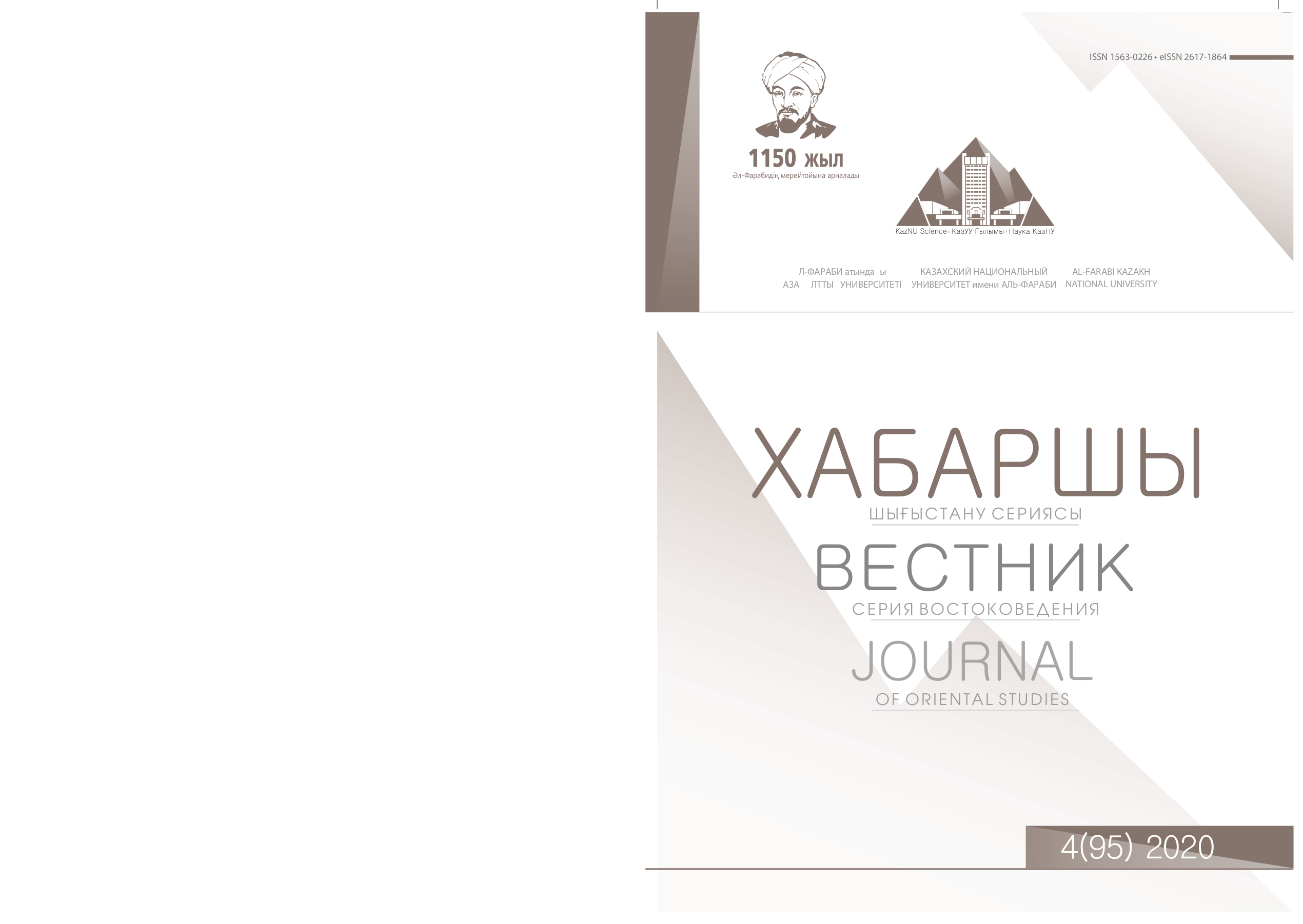Grammatical structures of proverbs and sayings in Chinese and Kazakh languages
DOI:
https://doi.org/10.26577/JOS.2020.v95.i4.07Abstract
The cultural image of each nation in the world is unique and is determined by such factors as living conditions, history, social structure, traditions, way of life. The cultural view of the world is confirmed by all his views by linguistic means, so that we can talk about the linguistic picture of the world and compare and contrast concepts formed at the level of thinking and based on cultural research. Proverbs and sayings are a special linguistic form, therefore lexicology is the object of grammar research. Chinese proverbs as a constant unit of the language have some features that distinguish them from the Kazakh proverbs and sayings. This article reveals the general and specific in the grammatical structure of proverbs and sayings based on the material of the Kazakh, Chinese languages and their theoretical understanding in the aspect of the problem of the relationship between language and culture, which will contribute to a deeper understanding of the national perception of the world reflected in the linguistic picture of the world. Key words: proverb, saying, phraseological unit, paremia, set expressions, idiom, phrase.




